Adrian Collins's Blog, page 62
March 21, 2024
REVIEW: The Thick and the Lean by Chana Porter
Chana Porter’s The Thick and the Lean is one of those rare stories that continue living in your brain rent-free long after the last page. This is slow, delicious literary SFF, a story about a looming presence and social pressure. If you’re looking for epic events, battles or action, this is not the book for you. To use the book’s food focus, this is small plate haute cuisine. You need to be in the mood for it, not looking for a quick burger fix. That said, The Thick and the Lean is utterly delicious, a story to savour.
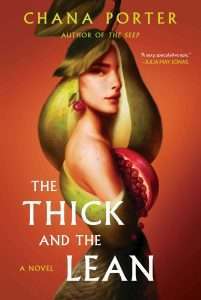 Beatrice is obsessed with food. It’s the thing she dreams about – but she has been raised in Seagate, a cult-like community where food has mostly been replaced by supplements. To be seen eating is shameful. Reiko is a poor university student, set to make her own future. Soon, her scholarship is taken away, however, leaving her unable to stay in school without going into ruinous debt. Both women need to figure out how to move forward in life, how to untangle their own desires from social customs. A shared story weaves through the book, providing touching points for the two plotlines.
Beatrice is obsessed with food. It’s the thing she dreams about – but she has been raised in Seagate, a cult-like community where food has mostly been replaced by supplements. To be seen eating is shameful. Reiko is a poor university student, set to make her own future. Soon, her scholarship is taken away, however, leaving her unable to stay in school without going into ruinous debt. Both women need to figure out how to move forward in life, how to untangle their own desires from social customs. A shared story weaves through the book, providing touching points for the two plotlines.
The most grimdark character in the story is society at large. The characters themselves are complex and multi-layered, of course, but the looming sense of unease, of struggling against perceived boundaries is what makes The Thick and the Lean. In many ways, it doesn’t matter who the story is about specifically, it matters far more to see these characters as examples of the society they move in. The narration, with its poetic prose, helps create that sense of distance, following Beatrice and Reiko closely without ever really taking us into their minds. In that sense, The Thick and the Lean is closer to literary fiction than what we tend to expect of genre fiction.
Within a few pages I found myself fascinated by the story, the challenges the characters face – and the relationship they have to food. For me, as someone who has a complicated relationship with food due to chronic illness affected by it, it rang true in so many ways. Who are we without food, who does eating make us? The Thick and the Lean doesn’t provide the reader with easy answers. Rather, it poses questions, questions that make us ponder who we are and how we interact with the world. There is a clear anti-capitalist sentiment to The Thick and the Lean – I particularly liked how it homed in on consumer culture and voyeurism. Oh, and its set in a queernormative world, using acceptance of queerness as a means to show other inequalities in society.
The contrasting perspectives of Beatrice and Reiko helped show the range of issues their society faces, highlighting how being yourself is a much harder road than following along the masses. Through religion, cult-like devotion to corporations, expectations of sexual submission for women, along with the core themes of food, eating and shame, The Thick and the Lean makes a powerful statement that it is worth it to stand up for yourself and what you believe. Tender and brutal at the same time, I am certain I’ll keep thinking about this for a long time.
Read The Thick and the Lean by Chana PorterThe post REVIEW: The Thick and the Lean by Chana Porter appeared first on Grimdark Magazine.
March 20, 2024
REVIEW: Mushroom Blues by Adrian M. Gibson
Last Updated on March 21, 2024
Adrian M. Gibson completely breaks the mold of conventional storytelling in Mushroom Blues, a wonderfully weird, darkly disturbing and freakishly fungal sci-fantasy noir debut that is more dangerously addictive than any drug imaginable.
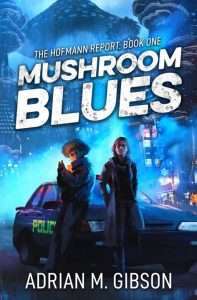 In many ways, the start of this novel reminded me of the start to Krystle Matar’s Legacy of the Brightwash, except make it a lot more fungal. Both stories open with a curmudgeonly, angry, and deeply flawed officer of the law making the horrifying discovery of a young child’s mutilated body, which then sucks them into a chaotic murder investigation that ends up challenging them not only physically, but especially on a mental, moral, emotional, and spiritual level.
In many ways, the start of this novel reminded me of the start to Krystle Matar’s Legacy of the Brightwash, except make it a lot more fungal. Both stories open with a curmudgeonly, angry, and deeply flawed officer of the law making the horrifying discovery of a young child’s mutilated body, which then sucks them into a chaotic murder investigation that ends up challenging them not only physically, but especially on a mental, moral, emotional, and spiritual level.
From the very first page, Hofmann’s intimate first person narration completely sucked me in, and I quickly started rooting for her while also being horrified by her racist and prejudiced beliefs and worldviews. I am almost ashamed to admit that I initially found myself getting slightly infected by her revulsion of all things fungal, which just goes to show how incredibly strong and effective Gibson’s character work is.
Though her biased view of the mushroom people and their culture is exactly what made her such a complex and compelling protagonist, and I loved experiencing the fantastically fungal city of Neo Kinoko through her outsider’s perspective. As her worldviews started to be challenged by her first-hand experiences, I soon found myself utterly fascinated with the hidden beauty of the fungal people’s way of life.
Gibson simply establishes this vibrant and immersive world with masterful talent, breathing so much life into the city and its people, while also dropping in just enough spores (pun indeed intended) to make the wider world feel tangible and unfold in the most organic way possible. Moreover, I really enjoyed the Japanese influences in the creation of Neo Kinoko, as those more familiar aspects actually helped ground me amidst all the bewildering fungal world building going on in Mushroom Blues.
There’s so much richness and authenticity to the culture of the fungal people, from the language, to the food, to the religion, and to all the uniquely quirky customs and beliefs. And don’t get me started on their interesting sense of community and way of communication through the fungal network, which just has to be one of the most imaginative takes on a soft magic system I have ever come across.
Though, what I appreciated most about the establishment of this group of people, is the fact that they are not presented as a monolith. Through Hofmann’s interactions with all kinds of different fungal people, the staggering nuance and complexity of their community really starts to shine through. I was personally especially surprised by the beautifully complex dynamic that developed between Hofmann and her reluctantly assigned partner, the fungal cop Koji (who needs to be protected at all costs, thank you very much).
It is just truly beyond me how Gibson managed to tell a story that is so utterly alien, yet tragically and beautifully human at the same time. On top of the broader themes of colonisation, corruption, sexism, and oppression, Mushroom Blues also tackles much more intimately vulnerable topics of grief, regret, trauma, motherhood, forgiveness, redemption, and healing. Yet at no point does the tone of the story ever become preachy, as these themes are all masterfully woven into Hofmann’s tumultuous character arc that we get to experience from the front-row seat.
Now, there’s no denying that Mushroom Blues is a confronting and uncomfortable reading experience at times, but at the same time it also has an addictively high entertainment factor. By using all the best tropes and the tight plotting of the crime detective genre, Gibson is able to maintain an intoxicating air of mystery while this story throttles along at full speed. An entertaining buddy cop dynamic, believably depraved baddies who you can love to hate, thrilling car chases, confounding murder boards, dangerous gunfights, tense interrogations, and, of course, some psychedelic madness; Mushroom Blues has got it all.
There were maybe a few moments where some revelations or shifts in attitude felt a tiny bit rushed, especially when characters reminded themselves of the fact that all these crazy events had taken place over a mere couple of days. That said, the way that all the seemingly separate elements and threads of the story ultimately interweave is nothing short of masterful, resulting in an anxiety-inducing climax sequence that hits all the right emotional beats and just hurts so damn good.
Safe to say, I have been infected with the mushroom madness, and I am now hungering for more in the best way possible. This story blew all my expectations completely out of the water, and how Gibson thought it was acceptable to write a debut of this insanely high quality will forever be the true mystery to me.
If you like the sound of a dark, fast-paced, and highly imaginative fungalpunk noir story that will take you on a brutally wild emotional rollercoaster, then don’t hesitate to enter the Fungalverse and pick up Mushroom Blues now!
Thank you to the author for providing me with an eARC in exchange for an honest review. All opinions are my own.
Read Mushroom Blues by Adrian M. GibsonThe post REVIEW: Mushroom Blues by Adrian M. Gibson appeared first on Grimdark Magazine.
March 19, 2024
REVIEW: Conan the Barbarian #8 by Jim Zub (W) and Doug Braithwaite (A)
At the conclusion of Conan the Barbarian issue #7, our hero finds himself alone. Not only was Conan forced to kill comrade Chaundra the Chat by his own hand, the other thieves of the Gloryhounds are also dead, supernaturally compelled to murder each other by the three specters inadvertently freed from the stolen Black Stone. With all other involved parties eliminated, the specters force themselves into Conan, psychically battering him into submission. The undead trio agree that Conan will make an ideal tool for their dormant master Thulsa Doom, but to fulfill their dark goals they require blood sacrifices made using the ancient Pictish blade Conan acquired during his adventures with Brissa (during the “Bound in Black Stone” story arc, Conan the Barbarian issues 1-4). Unfortunately for Conan’s ghostly tormentors, distraught after the death of his pirate queen Bêlit, the barbarian pawned the weapon for drinking money immediately after his arrival in Shadizar ten months ago. With Conan as their unwilling puppet, the specters use him to carve a bloody swath through the city in search of the Pictish sword.
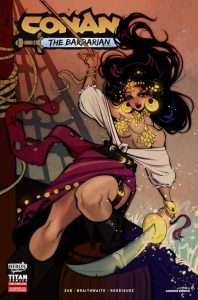 This issue marks the end of the Conan the Barbarian “Thrice Marked for Death!” storyline. While it was exciting to see the usually indomitable Conan’s metamorphosis into a Terminator-like possessed killing machine, this story arc’s conclusion felt unfulfilling. The last two issues kept raising the stakes, making me wonder how everything would be resolved, but—unsatisfyingly—the answer is that readers aren’t given much of a resolution. Conan’s plight is significantly worse than his situation at the beginning of the story, and apart from combat victories he doesn’t emerge particularly triumphant.
This issue marks the end of the Conan the Barbarian “Thrice Marked for Death!” storyline. While it was exciting to see the usually indomitable Conan’s metamorphosis into a Terminator-like possessed killing machine, this story arc’s conclusion felt unfulfilling. The last two issues kept raising the stakes, making me wonder how everything would be resolved, but—unsatisfyingly—the answer is that readers aren’t given much of a resolution. Conan’s plight is significantly worse than his situation at the beginning of the story, and apart from combat victories he doesn’t emerge particularly triumphant.
After four issues of flashbacks, the Bêlit plot thread does receive some payoff as a vision of his departed soulmate provides some spiritual assistance at a critical moment. However, the inclusion of two other familiar faces from past issues muddies the moment, making Bêlit’s aid seem less crucial and special than it would have had she alone appeared in Conan’s time of need.
As always, the Jeffrey Shanks essay includes with issue #8 provides some welcome added context to the events of the Conan the Barbarian comics. The mysterious Black Stone has occupied a place of central importance in both Titan Comics’ story arcs to date, and Shanks points out that corrupting ebon stone is a recurring motif in Robert E. Howard’s (non-Conan) stories. Shanks also traces the influence back to earlier writer Arthur Machen and his 1885 work The Novel of the Black Seal, which Howard is known to have read and enjoyed.
Cliffhanger endings intended to spur readers to buy the next issue are ubiquitous in both comics and the serialized pulp magazines before them. However, whereas the “Bound in Black Stone” story had a distinct beginning, middle, and end, “Thrice Marked for Death” is much less self-contained, to the story’s detriment. While I’m excited to find out what happens next, I suspect the incompleteness of this story will be frustrating to those who read Conan the Barbarian in graphic novel format rather than the monthly issues.
There’s much to be commended about Jim Zub’s handling of the Conan the Barbarian series, but simultaneously it feels like he’s already struggling with the four-issue story arc format. Issue 9 brings with it a new story arc and the return of “Bound in Black Stone” artist Roberto De la Torre, but perhaps it would have been better to give “Thrice Marked for Death” some additional issues and tell a more complete story rather than adhere to the (self-imposed?) four-issue arc structure. “Thrice Marked for Death” is an exciting ride that ends with a bang. But while the impulse to leave readers wanting more is understandable, some more resolution would have been appreciated in the story arc’s concluding issue.
Read Conan the Barbarian #8The post REVIEW: Conan the Barbarian #8 by Jim Zub (W) and Doug Braithwaite (A) appeared first on Grimdark Magazine.
March 18, 2024
OUT TODAY! Grimdark fantasy horror novella In the Shadow of their Dying by Anna Smith Spark and Michael R. Fletcher
The grimdark fantasy horror novella you’ve all been waiting for is out now! In the Shadow of their Dying by Anna Smith Spark and Michael R. Fletcher hits bookshelves today. We’ve had our largest pre-order for a book ever–more than quadrupling the pre-orders for our best ever general release prior to this–and the early reviews in have been absolutely epic.
When I first read this fantasy novella, I knew we had something special. Something that was fun, that you could read in an afternoon, that you could laugh with and lose yourself in, and that was different. Smith Spark and Fletcher have delivered an absolute experience, and I am so happy we get to share this with you today.
About In the Shadow of their Dying
 The third best assassin. A second rate mercenary crew. One terrifying demon.
The third best assassin. A second rate mercenary crew. One terrifying demon.
As Sharaam crumbles under siege, a mercenary crew hires an assassin to kill the king. For Tash, it’s a chance at glory—to be the best blade in the dark Sharaam has ever known. For Pitt, it’s a way to get his cutthroat crew past the Tsarii siege and out of this hellhole, maybe even with some gold to their name. For Iananr the Bound One, it’s a dream of shadows and human blood.
In the Shadow of their Dying is available on kindle, in paperback, and glorious hardcover. Artist Carlos Diaz and designer Shawn King have brought it to life outside and inside, bringing to life the horror of the siege of Sharaam, and the desperation of those trying to get out.
Reviewers have incredibly generous in their praise so far, which you can check out on our Goodreads page, and the pick of the bunch is below:
“Brutal, horrifying, hilarious in equal measure; this is quintessential grimdark.”
– Richard Swan, author of The Justice of Kings
“A gloriously bloodstained and twisted story: war and magic combine in enjoyably horrible ways and faced down by a selection of wonderfully bad people. A compelling, visceral read.”
– Adrian Tchaikovsky, author of City of Last Chances
“Awash with bloody brio and dark humour, In the Shadow of Their Dying sparks with relentless narrative energy as it tells the story of a siege-gone-wrong, and an assassin who can do no right.”
– T.R. Napper, author of 36 Streets
“Drips with a blessed ichor of mud-drenched grimdark whilst thrumming with nebulous, arcane magic. From laugh-out-loud wry humour to gibbering, demoniac madness; the journey of this story will leave you rattled, ragged and desperate for more.”
– Matt Wesolowski, author of Deity
Read In the Shadow of their Dying by Anna Smith Spark and Michael R. Fletcher
The post OUT TODAY! Grimdark fantasy horror novella In the Shadow of their Dying by Anna Smith Spark and Michael R. Fletcher appeared first on Grimdark Magazine.
March 17, 2024
REVIEW: Blood Sigils
Last Updated on March 18, 2024
Blood Sigils is a supplement for Vampire: The Masquerade Fifth Edition. It is a supplement detailing the use of Blood Sorcery, Thin Blooded Alchemy, and the black market that has emerged around the use of magic among vampires (called “The Scene”). Blood magic supplements were quite popular in earlier editions of Vampire: The Masquerade and it is surprising its taken this long to have a book discussing its use. Could the book have contained more information on things like Oblivion and Church of Set magic? Probably but we’ll mostly be judging the book on what it is rather than what it could be.
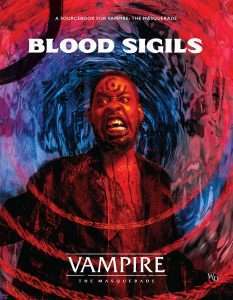 Overall, I think Blood Sigils is one of the best books released by Renegade Studios so far. I was not fond of The Second Inquisition or Sabbat: The Black Hand supplements but was much more appreciative of Blood-Stained Love. Blood Sigils benefits from a decision that I hope more books will take heed from in the future: the decision to incorporate more lore from the classic era of Vampire: The Masquerade. Given so many other supplements seem interested in ignoring or quietly retconning classic lore, it’s nice to see this book is best appreciated by those with a decades-long familiarity with the material.
Overall, I think Blood Sigils is one of the best books released by Renegade Studios so far. I was not fond of The Second Inquisition or Sabbat: The Black Hand supplements but was much more appreciative of Blood-Stained Love. Blood Sigils benefits from a decision that I hope more books will take heed from in the future: the decision to incorporate more lore from the classic era of Vampire: The Masquerade. Given so many other supplements seem interested in ignoring or quietly retconning classic lore, it’s nice to see this book is best appreciated by those with a decades-long familiarity with the material.
Seriously, the book’s best parts are updating both Clan Tremere and the Banu Haqim with references to their extensive history. Not just the now-destroyed chantry in Vienna is referenced but also House Ceoris from Vampire: The Dark Ages. “House Goratrix” has taken over the section of Clan Tremere that is attempting to rebuild the Pyramid as it used to be, and its leader is someone that will be familiar to anyone familiar with The Transylvania Chronicles. We also get a sense of what happened with the Banu Haqim Schism that was the focus Clan Book: Assamite Revised.
This book is perfectly usable by players who have never experienced Vampire: The Masquerade before Fifth Edition and these are just interesting references. However, as Easter Eggs for those who have spent thirty years playing in the World of Darkness, they are a reminder that our fandom is appreciated. I could have done with even more but I’m certainly not going to begrudge the book for including what it did. Sadly, those looking for updates of things like Thaumaturgy Paths and specific rituals will have to look elsewhere.
Most of the book is devoted to the creation of a thriving magical subculture in the wake of the Tremere’s stranglehold being destroyed by the Second Inquisition. Everyone who wants to learn magic can learn magic these days, at least among the Damned. But being the immortal parasites they are, this comes with a price. Most of the magic for sale is watered down, erroneous, or from copies of copies. Experimentation is the order of the day and back-alley deals are happening in every major city.
The central conceit of Blood Sigils is that magic is like drugs and especially drug dealing. Quality, ingredients, violence, crooked law enforcement (human or otherwise), and cheats are all things you run into in “The Scene.” It is also strongly related to the Blood Trade where buying nourishment is significantly easier than buying the blood of a specific seven-year-old that was born under a blood moon. Much of the horror is implied and that is what makes it appropriately punk.
The book contains sample NPCs of dealers, crooked Sheriffs, crooked cops, dabblers, veterans, diablerists, and Thin Blooded alchemists. It contains a large number of blood cults and magical secret societies that vary in quality (my favorite is a Masquerade breaking pharmaceutical company from India). There’s also several magical artifacts meant to show how they might be implemented into the setting. Much of the Storyteller advice is based on creating mood and, for once, actually quite useful.
Blood Sigils is probably the most “punk” book that Fifth Edition has and actually reads like someone who has more than a television show’s familiarity with drugs and the underground night life of a major city. Whether they have or not, it feels evocative and actually manages to live up to the potential of Fifth Edition. Paradox Interactive has continually wanted to capture an adult counterculture feel for its middle aged veteran audience and newcomers alike. This actually succeeds.
Read Blood SigilsThe post REVIEW: Blood Sigils appeared first on Grimdark Magazine.
March 16, 2024
REVIEW: FERAL by Gemma Amor
The five-word blurb for Gemma Amor’s blistering new short story, FERAL, is as fitting as it is succinct: “Meet Margot. She’s had enough.”
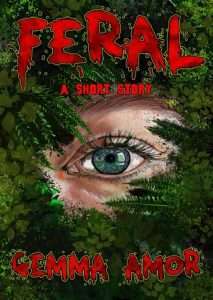 The opening scene of FERAL channels Franz Kafka’s classic novella, The Metamorphosis, as Margot awakens in a disoriented state, coming to grips with a bodily transformation:
The opening scene of FERAL channels Franz Kafka’s classic novella, The Metamorphosis, as Margot awakens in a disoriented state, coming to grips with a bodily transformation:
“Soon I will slough this suffocating flesh off completely, and I do not know what I will be underneath, but that is part of the joy of giving birth to oneself, I suppose: the uncertainty of the new.”
As a schoolgirl, Margot was bullied for her natural body hair and later became obsessed with meeting society’s expectations of femininity:
“I started the war with my body in earnest, and it consumed me.”
Margot’s self-consciousness regarding her body continues into adulthood: she is always careful to present a well-groomed, professional façade, masking her face with makeup and keeping her teeth an unnatural shade of white.
Then one day, Margot had enough. Exhausted by the daily obsession with her physical appearance, she decides to rebel against society’s norms. FERAL follows Margot as she discards her uptight persona and inhibitions, embracing her human body in its most natural state. However, Margot takes her newfound grittiness to an extreme, refusing to bathe or keep herself clean. Margot’s increasingly concerned boyfriend, Adam, genuinely loves her. But he looks on with despair, and perhaps a bit of disgust, as the stench from her unwashed body grows.
Meanwhile, Margot finds new kinship with a neighborhood fox, adopting some of its vulpine behavior:
“My evening foraging habits grew more determined. I began raiding people’s bins when they were left out the night before collection day, sharing any particularly good morsels with the fox, who was loyal to me now she had determined I was a good source of food.”
FERAL dips into zoomorphism as Margot assumes animalistic features, including elongated canine teeth and a heightened sense of smell. In this manner, the story echoes traditional werewolf horror, albeit with a more gradual transformation.
Although it would seem natural to describe FERAL as a story of feminist rage, its themes of freedom and nonconformity are much broader. More than anything, FERAL is a declaration of independence from the often nonsensical expectations that society places on people, especially women.
Through it all, Gemma Amor writes with a savage energy, embracing Margot’s insatiable hunger as she casts aside the inhibitive for a more instinctive existence. Altogether, FERAL is a ferociously good story, and not one I’ll soon forget.
Read FERAL by Gemma AmorThe post REVIEW: FERAL by Gemma Amor appeared first on Grimdark Magazine.
March 15, 2024
REVIEW: A Tempest of Tea by Hafsah Faizal
Hafsah Faizal’s A Tempest of Tea is a triumphant anti-colonial love letter to her fantasy readers. The #1 New York Times bestselling and award-winning author initially caught the attention of the book community with her Arabia-inspired Sands of Arawiya duology. A Tempest of Tea, whilst set in the same universe as Faizal’s well-loved duology, follows Arthie Casimir across the world from Arawiya in Ettenia, Faizal’s fictional rendition of England. Arthie and her adoptive brother Jin run a notorious tearoom known as Spindrift, which transforms into an illegal blood-house for vampires at night. Whilst vampires roam free in society, they are very much ostracized and Spindrift allows the feared beings some reprieve and privacy. When their much-beloved establishment is threatened by a governmental force known as The Ram, Arthie and Jin must orchestrate a seemingly impossible heist in the heart of a vampire stronghold in order to gain leverage against the impending threat. In order to do so, they recruit a number of unlikely allies, which includes striking a deal with an Arawiyyan-born government official. As the plan builds, secrets are revealed and conspiracies are cracked wide open. In this thrilling first book of a new fantasy duology, Hafsah Faizal brews a story steeped in angst, thrills and the promise of revenge.
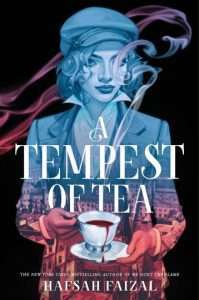 Compared to Peaky Blinders and the Legend of King Arthur, it is no surprise that Faizal’s world-building is spectacular; she paints out her settings and lore so vividly, one would think they’re walking the streets of the city of White Roaring themselves. With such multi-faceted characters, we are given equally multi-faceted points of views. Flitting between Arthie, Jin and Felicity (or more affectionately known as Flick) was refreshing, with all three main characters being people of colour and witnessing each of their unique and diverse experiences. Arthie’s brooding and serious image is countered by her brother, Jin. They are family in every way except through blood, and they certainly do not let that stand in their way. Jin, in comparison to Arthie, is charming and flirtatious, and his sister’s most trusted partner-in-crime. I adored these two as a team. With the further additions of Flick as their master forger, Laith (and his unnamed kitten) as their stealthiest teammate, and Matteo as their rakish vampire ally, an unlikely group is formed; one that works so entertainingly well!
Compared to Peaky Blinders and the Legend of King Arthur, it is no surprise that Faizal’s world-building is spectacular; she paints out her settings and lore so vividly, one would think they’re walking the streets of the city of White Roaring themselves. With such multi-faceted characters, we are given equally multi-faceted points of views. Flitting between Arthie, Jin and Felicity (or more affectionately known as Flick) was refreshing, with all three main characters being people of colour and witnessing each of their unique and diverse experiences. Arthie’s brooding and serious image is countered by her brother, Jin. They are family in every way except through blood, and they certainly do not let that stand in their way. Jin, in comparison to Arthie, is charming and flirtatious, and his sister’s most trusted partner-in-crime. I adored these two as a team. With the further additions of Flick as their master forger, Laith (and his unnamed kitten) as their stealthiest teammate, and Matteo as their rakish vampire ally, an unlikely group is formed; one that works so entertainingly well!
Whilst this young adult novel has all the thrills of vampire society, found-family and hints of romance, it is still set on a much darker foundation. Arthie’s childhood in Ceylan (based on the author’s background of Sri Lanka), is stained by the murder of her mother at the hands of Ettenian colonists. Arthie’s entire existence in Ettenia feels grimdark in nature; having witnessed her mother’s brutal murder at such a young age, Arthie’s existence is fuelled by rage, and the vengeance she hopes to enact on the colonial forces of the country she resides in. Opening up an illegal tearoom and hosting the city’s most alienated population of vampires is one of the many ways Arthie bares her teeth at the empire. I can vaguely ensure (in order to avoid spoilers) that aspects of the novel get significantly darker, making this a story that grimdark fans would really enjoy.
The pacing of the story was a bit stifling; the first half was quite slow, but then significantly picks up in the second. There were aspects of the book that I felt were slightly underdeveloped. The whole premise of the book balances on the axis that is Sprindrift, but we are only ever in the setting for a few chapters. I would have loved to seen more of it, as it seemed to be quite a foundational element to both Arthie and Jin’s life. The romance aspect fell short for me because it ultimately felt slightly forced. Jin’s romantic storyline with Flick fared better than Arthie’s storyline with Laith (and sometimes Matteo), as there was a sense of history between them that built towards their feelings for each other. For a character as untrusting as Arthie, the romantic development with Laith simply felt too rushed.
Faizal’s writing is both captivating and bewitching, and my admiration for this novel has steeped further since finishing it; the characters and story have stayed with me weeks later, and I imagine they will continue to do so until I am taken out of my misery of waiting for the sequel.
Read A Tempest of Tea by Hafsah FaizalThe post REVIEW: A Tempest of Tea by Hafsah Faizal appeared first on Grimdark Magazine.
March 14, 2024
REVIEW: Returns by Mark Lawrence
Mark Lawrence returns to the Library Trilogy with a pair of new short stories about the indelible impact of books on the lives of their readers. This companion volume, the aptly named Returns, brings us back to the infinitely large library of The Book that Wouldn’t Burn and its excellent cast of characters, including the deputy head librarian, Yute, and the precocious young librarian, Livira.
 Returns also features our trio of beloved animal companions from The Book that Wouldn’t Burn, all of whom are depicted in Thomas Brown’s cover art. The oversized cat, Wentworth, is front and center, along with the ink-black dog, Volente, and the raven whose name I shall not reveal. All three animal friends are present in Returns, with Volente featuring prominently in both stories.
Returns also features our trio of beloved animal companions from The Book that Wouldn’t Burn, all of whom are depicted in Thomas Brown’s cover art. The oversized cat, Wentworth, is front and center, along with the ink-black dog, Volente, and the raven whose name I shall not reveal. All three animal friends are present in Returns, with Volente featuring prominently in both stories.
The title story of Returns concerns the search for a missing volume, The Book of Many Stories, that must be returned to the Library. The search cuts across space and time and may have implications for Yute’s missing daughter, who has been lost in the Library for over twenty years.
The second story, “About Pain,” is Mark Lawrence’s homage to J.D. Salinger’s classic The Catcher in the Rye. The goodest of good boys, Volente, brings an unwanted copy of Catcher to the lead protagonist, Holden, who detested the book when he was forced to read it in school. Upon returning Catcher to the library, Livira instructs Holden to read it every ten years and come back to tell her about it. The story then follows Holden through the decades as his life experiences make him appreciate new aspects of Catcher that he hadn’t yet considered. In a nice touch, “About Pain” also features Clovis Eventari, Evar’s imposing redheaded sister from The Book that Wouldn’t Burn.
In my opinion, the Library Trilogy has now surpassed the Broken Empire in terms of its possibilities for short story adventures. Mark Lawrence’s Broken Empire trilogy provided an outstanding setup for short stories featuring the dark wit and haunted brokenness of Jorg Ancrath, as well as those focused on side characters from his band of Road Brothers. However, since the Library spans all space and all time, the possibilities in the Library Trilogy are limitless.
The two stories in Returns serve as gentle and insightful ruminations on the universality of stories in our common humanity. In his previous Library short story, “Overdue,” Mark Lawrence focused on how books build connections between readers. In Returns, the focus is on the relationship between individual readers and the books themselves, i.e., the physical manifestations of these stories. When we return a book to the library, the book itself hasn’t changed, but we have changed irreversibly as a result of reading it.
If you enjoyed The Book That Wouldn’t Burn, be sure to add Returns to your reading list today. The Library Trilogy—and its accompanying short stories—will leave a permanent impact on you, from which there is no return.
Read Returns by Mark LawrenceThe post REVIEW: Returns by Mark Lawrence appeared first on Grimdark Magazine.
March 13, 2024
REVIEW: Dyer Street Punk Witches by Phil Williams
Dyer Street Punk Witches by Phil Williams is an urban fantasy thriller featuring a trio of punk rock musicians led by the vodka-swigging social activist Kit “Fadulous” Hamley on bass, together with the quiet genius Clover on lead guitar and their friend “Big” Mad on drums. The trio live on Dyer Street, the most dangerous street in the city of Ordshaw. Kit is a rather intimidating figure, admired by some and feared by others as she fights to bring peace, justice, and accountability to a region overrun by gang warfare.
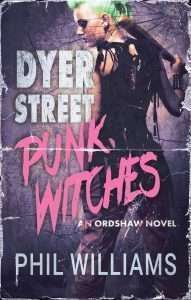 In addition to leading their punk band, Dyre Grrls, Kit serves as chief editor and publisher of a local magazine that makes a business of upsetting powerful people. Their basic tenets, as enumerating by Kit, include “challenging the establishment, defending freedom of expression, fighting for equal rights, defeating all forms of bigotry, rejecting the mainstream.”
In addition to leading their punk band, Dyre Grrls, Kit serves as chief editor and publisher of a local magazine that makes a business of upsetting powerful people. Their basic tenets, as enumerating by Kit, include “challenging the establishment, defending freedom of expression, fighting for equal rights, defeating all forms of bigotry, rejecting the mainstream.”
The other lead protagonist of Dyer Street Punk Witches is Aaron, a young man whose book smarts outweigh his street smarts by a considerable margin. Kit had previously saved Aaron’s life, coming to his rescue during a violent mugging. Aaron returns to Dyer Street to face his fears and come to peace with that traumatizing (and somewhat embarrassing) event.
Aaron also suspects that Kit may have tapped into some supernatural powers to aid in his rescue. He decides that the best way to learn more about his savior and, perhaps, overcome his own self-doubt, would be to volunteer for Kit’s magazine. She immediately puts her new volunteer to work, pushing him out of his comfort zone.
Dyer Street Punk Witches bounces between the present-day narrative and a backstory that occurs mostly in the 1990s. The notorious Saxon gang from the 1990s is making a return in the present day, bringing some frightening new powers.
The worldbuilding in Dyer Street Punk Witches is outstanding, with just the right amount of occultist magic to balance the realistic street grit that sets the backdrop for the novel. I especially enjoyed the social justice aspects of the story, as well as the plentiful punk rock references. Any book that name-drops Sleater-Kinney automatically gets bonus points from this reviewer.
My only minor complaint is that Dyer Street Punk Witches finishes too quickly. A sizeable fraction of the book is spent on exposition, which I thoroughly enjoyed, but I wanted a greater buildup in action during the second half of the book. I would have happily devoured another 100 pages of action before letting this story go.
Altogether, Dyer Street Punk Witches brilliantly captures the feminist riot grrl spirit in a dark urban fantasy setting. I hope Phil Williams will share more stories with these characters in the future.
Read Dyer Street Punk Witches by Phil WilliamsThe post REVIEW: Dyer Street Punk Witches by Phil Williams appeared first on Grimdark Magazine.
March 12, 2024
REVIEW: Evocation by S.T. Gibson
Readers may be familiar with S. T. Gibson from their breakout debut, A Dowry of Blood. Originally published by Nyx Publishing, a small independent in the north of England, the book was later picked up with Orbit and won a Goodreads Choice Award for best horror novel. That is to say, expectations are high when it comes to Gibson. Evocation, the first in a series published by Angry Robot, is a very different beast to her earlier work – but in many ways takes her strengths as a writer to a new genre. We are taken from historical vampires to contemporary paranormal and meet David, Rhys and Moira as they work on breaking a curse.
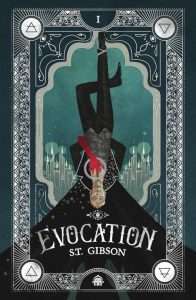 David and Rhys used to love each other. These days, they are more rivals than anything else – and Rhys is married to Moira. Both men have their reasons for competing for leadership of their occult society and are putting their everything into securing the position. Until David reaches out to Rhys. Unexpectedly. Breaking a curse usually needs more than a single person. And despite everything, there is no one David trusts like he does Rhys. And so Rhys and Moira are pulled into David’s mess of a personal life, navigating emotions, social expectations and demons.
David and Rhys used to love each other. These days, they are more rivals than anything else – and Rhys is married to Moira. Both men have their reasons for competing for leadership of their occult society and are putting their everything into securing the position. Until David reaches out to Rhys. Unexpectedly. Breaking a curse usually needs more than a single person. And despite everything, there is no one David trusts like he does Rhys. And so Rhys and Moira are pulled into David’s mess of a personal life, navigating emotions, social expectations and demons.
Evocation is utterly captivating, combining queer camaraderie (and drama, let’s be honest) with Gibson’s strong prose. It mixes the best part of popcorn-y CW shows with strong, believable characters and a clear quest – and doesn’t shy away from difficult conversations. One of the things that stood out to me most is the mundane nature of the story. There is a curse that needs breaking, but it is on a personal level rather than save-the-world scale. It allows for slower pacing and more considered action. Here, the characters have space to express themselves, consider their options and weigh cost against gain. It makes the characters stronger and allows for more complexity. It never feels like the characters need to take the easy way out or act according to a tight moral compass in order to get through the story. There is scope for selfishness – and for saying no.
I loved meeting David, Rhys and Moira. Their dynamic is interesting to begin with and then gets stronger and stronger as the reader moves through the story. I really appreciated how the characters (despite their many, many other flaws) are mature adults. They choose open discussion over passive aggressive silence. And eschew jealousy. And that alone is a breath of fresh air. As the reader may expect from Gibson, we move into polyamory territory and I loved this take on a love triangle.
Most of all, Evocation is great fun. It manages to balance a great reading experience and the tone of levity that needs with thoughtful musings about human nature. Gibson is a rising star in queer SFF and I need more – both in this series and more generally.
Read Evocation by S.T. GibsonThe post REVIEW: Evocation by S.T. Gibson appeared first on Grimdark Magazine.

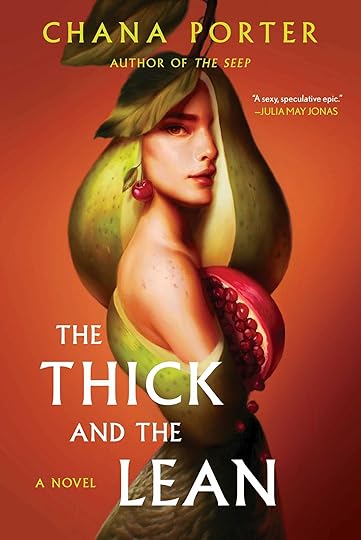 Read on Amazon
Read on Amazon

